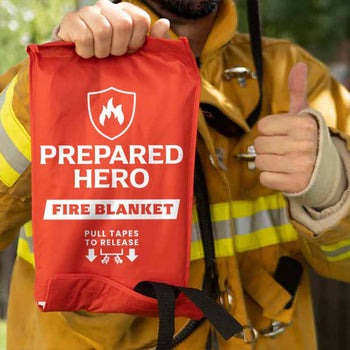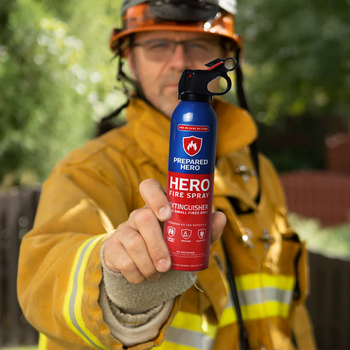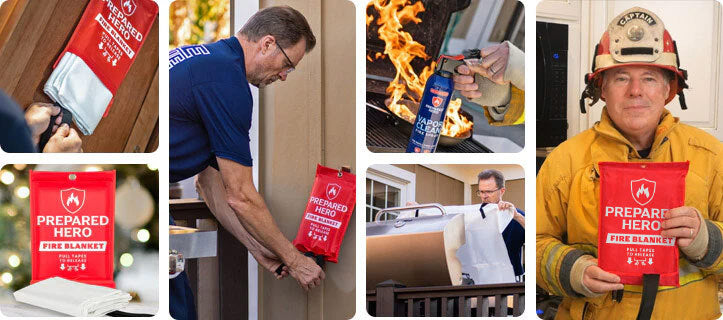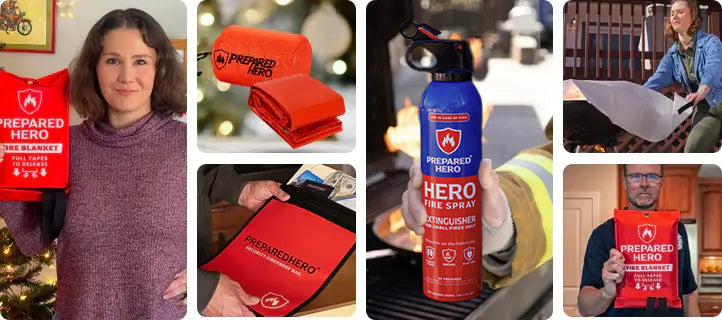Running a busy commercial kitchen means juggling a lot, and one mistake can cost you everything. This is where NFPA...
Where you put your smoke detectors matters just as much as installing them. Proper placement makes sure they can detect smoke quickly and give you the warning you need to act.
But where exactly should you put your smoke detectors? This guide covers where you should put them, where not to place them, and how high you should install them.
How Do Smoke Detectors Work?

Smoke detectors warn you of fires so you can act fast. They sense smoke particles, trigger an alarm, and give you precious time to get out or put the fire out.
There are three main types of smoke detectors: photoelectric, ionization, and combination.
Photoelectric smoke detectors spot slow, smoldering fires, like when wires overheat. They use a light beam in a chamber, and when smoke scatters the light, the alarm sounds. They’re perfect for places where false alarms from cooking or steam might be a problem.
On the other hand, ionization smoke detectors respond quicker to fast-flaming fires, like paper or grease fires. They use a tiny amount of radioactive material to keep the air inside ionized. The alarm activates when smoke interrupts that balance.
Combination detectors give you the best of both worlds by detecting both smoldering and fast-spreading fires. There are also units that combine smoke and carbon monoxide detectors.
No matter which type you use, smoke detectors work best as part of a fire safety plan that includes fire blankets, fire sprays, flame shields, and fire sprinklers.
Do you want reliable, easy-to-use, and affordable tools to put out small fires before they spread? Check out Prepared Hero’s fire prevention tools here, and get up to 51% off on certain items.
Where Should Your Smoke Detector Be Placed?
According to the NFPA (National Fire Protection Association), smoke detectors should be placed on every level of your home (including basements), as well as inside and outside bedrooms. Plus, fires often happen at night, so having smoke alarms near sleeping areas lets you wake up in time. Know more about how many smoke detectors you need here. You can also check our smoke detector placement diagram here.
Since smoke rises, detectors belong on the ceiling or high on a wall within 12 inches of the ceiling. If you mount one on the ceiling, keep it at least four inches away from the wall. Wall-mounted units should be four to 12 inches below the ceiling. Whenever possible, install them in the center of the ceiling for the best coverage.
Maintaining them is easy, too. Test them once a month by pressing the test button. Swap out the batteries every year, or sooner if they start randomly beeping in the middle of the night. Plus, you should replace the units every 10 years, even if they look fine.
Smoke detectors are also an important element of a fire prevention plan. They prepare you for the unexpected, along with exit routes and fire drills.
Should Smoke Detectors Be In the Bedroom or Hallway?

Yes, smoke detectors should be in the bedroom and hallway. The NFPA recommends installing one inside each bedroom and another in the hallway. Fires often happen at night, and having alarms in those spots gives you the best chance of hearing them, no matter where the fire starts.
If you only place one in the hallway, smoke inside the bedroom might not trigger it quickly enough. On the other hand, if you only put one in the bedroom, someone sleeping with the door closed may not hear the alarm from another part of the house. That’s why both areas matter.
In addition, every level of your home needs at least one smoke detector, including the basement. Think of it as layering protection: bedrooms, hallways, and each floor. This setup gives you and others early warning and extra time to escape safely if needed.
Where Not to Mount a Smoke Detector?
Don’t mount smoke detectors in corners and near vents, fans, kitchens, bathrooms, or areas with extreme temperatures. Drafts, steam, or dead air can cause false alarms or delayed detection.
First, avoid corners and the area where the wall meets the ceiling. This is also known as dead air space. Smoke doesn’t circulate well there, so your alarm may not pick up the smoke in time. If you have ceiling fans, keep your smoke detectors at least three feet away from the blades so the moving air doesn’t push smoke away.
Drafty areas are also a no-no. Don’t mount smoke alarms near vents, windows, or air conditioners. Airflow can scatter smoke before the detector has a chance to sense it. Similarly, skip humid or steamy areas like bathrooms, near showers, or by dishwashers. Moisture and steam often trigger false alarms.
Another big mistake is putting smoke detectors too close to heat sources. Avoid placing them directly above stoves, ovens, fireplaces, or within 10 feet of cooking appliances. The same goes for furnaces and water heaters. These areas can cause false alarms or damage your detector.
You’ll also want to avoid unfinished attics, hot workshops, or any area with extreme temperatures. Smoke alarms don’t function properly in temperatures below 40°F or above 100°F.
Lastly, don’t cover, paint, or decorate your smoke alarm. Anything blocking the sensor prevents it from working. Keep your smoke detectors clear and in the right places to make sure they do their job when it matters.
Should Smoke Detectors Be Placed High or Low?

Smoke detectors should always be placed high because smoke rises. The best spot is on the ceiling, ideally in the center of the room, where smoke would collect first. If you’re putting one on the ceiling, make sure it’s at least four inches away from the wall so it doesn’t sit in a dead air pocket where smoke might not reach quickly.
If your home has a standard ceiling, you can also mount the detector on a wall. In that case, the top edge of the alarm should be four to 12 inches below the ceiling. This way, it’s high enough to catch smoke as it rises but not too low to delay detection. For rooms with vaulted or peaked ceilings, place the smoke alarm within three feet of the highest point of the ceiling. That’s where smoke naturally gathers first.
How Far Should a Smoke Detector Be From a Vent?
A smoke detector should always be at least three feet away from an air vent. Vents create drafts that can push smoke away from the sensor, which may delay the alarm from going off when it matters most. They can also blow dust and debris into the detector, which causes false alarms or blocks it from working properly.
What Are the Rules for Smoke Detectors?

Smoke detectors aren’t just recommended. They’re required by building codes, and there are clear rules about where they should go and how they should work.
The main rule is coverage: every sleeping room must have its own smoke detector. You also need one right outside each sleeping area, like in a hallway, and on every level of your home, including the basement. Unfinished attics and crawl spaces are exceptions, so you can skip those. If a floor doesn’t have bedrooms, place an alarm in the main living space, like a living room or family room.
The rules get stricter for new homes. Smoke alarms usually have to be hardwired into the home’s electrical system with a backup battery in case the power goes out. They also need to be interconnected. That means if one alarm goes off, every alarm in the house will sound, so everyone has time to react.
Some areas also require photoelectric smoke detectors if the alarm is within 20 feet of a kitchen or bathroom with a shower. These are better at handling steam or light smoke without triggering false alarms.
Placement is just as important as location. Alarms should be mounted on the ceiling or high on a wall. The top edge should be four to 12 inches below the ceiling. Keep them away from windows, doors, vents, and ducts, since air movement can interfere with smoke detection.
Maintenance is a must, too. Test each alarm monthly using the test button. Replace batteries at least once a year or sooner if you hear that chirping sound. Most smoke detectors only last about 10 years, so replace them when they reach that age.
Finally, check your local building codes because rules can vary. If you’re renting, landlords are responsible for installing and maintaining smoke detectors. They should also show tenants how to use them.
How Far Should a Smoke Detector Be From a Ceiling Fan?
A smoke detector should always be at least three feet away from the tip of a ceiling fan’s blades. This distance is important because ceiling fans move air around the room. The airflow can push smoke away from the detector. If smoke doesn’t reach the sensor quickly, the alarm may be delayed, or worse, may not go off at all when you need it most.
Placing the detector too close to a fan can also cause false alarms or inconsistent performance. The moving air can thin out the smoke particles, making it harder for the sensor to detect them properly. By keeping that three-foot distance, you give the alarm a clear chance to pick up smoke as it rises and spreads.
When installing smoke detectors, you want to avoid placing them directly in fan boxes or in the center of the ceiling if that’s where the fan is mounted. Other air-moving sources, like windows, doors, or air vents, should also be avoided for the same reason that drafts can interfere with detection.
Lastly, always check the manufacturer’s instructions for your smoke alarm model. While the three-foot rule is a solid guideline, manufacturers sometimes give more specific placement recommendations for the best performance. Keeping your detectors properly spaced from fans and other airflow sources helps make sure they’ll respond quickly in an emergency.
How Close Can a Smoke Detector Be to a Wall?

If you’re mounting a smoke detector on a wall, the rule is simple: keep it between four and 12 inches below the ceiling. This sweet spot makes sure the detector picks up smoke quickly without being blocked by airflow issues.
Here’s why it matters. Smoke rises, but when it hits the ceiling, it doesn’t immediately spread into every corner. The area right where the ceiling meets the wall is called a dead air space. If your detector is too close to that spot, less than four inches from the ceiling, it may not sense smoke right away. On the other hand, if it’s placed more than 12 inches down the wall, smoke might not reach it fast enough to trigger the alarm.
Keeping the detector within that four to 12-inch range makes sure it sits in the best position to catch smoke as it spreads across the ceiling and moves downward. It’s a small detail, but it makes a big difference in how quickly the alarm responds.
Bottom line: if you’re installing on a wall, measure carefully. Stay clear of corners and always stick to the four to 12-inch guideline. That way, your smoke detector can do its job and warn you as early as possible when a fire breaks out.
Are Hardwired Smoke Detectors Better?
Hardwired smoke detectors are better than battery-only models because of their reliability and added safety features. Since they’re connected directly to your home’s electrical system, they have a steady power source. This means you don’t have to worry about forgetting to change batteries. Most of these detectors also include a battery backup, so even if the power goes out, they’ll still protect you.
Another big advantage of hardwired alarms is that they’re interconnected. If one detector senses smoke, all the alarms in the house go off at the same time. That’s a huge benefit, especially at night. It ensures everyone in the home gets warned, no matter where the fire starts.
These detectors also save you from one of the most annoying parts of battery-only models: the constant chirping when batteries run low. Since the main power comes from your electrical system, the backup battery lasts longer and doesn’t need to be changed as often.
Hardwired smoke alarms are recommended for new builds, major remodels, or homeowners looking to upgrade their fire safety setup. Just keep in mind that hardwired smoke detectors have to be installed by professionals because they tie into your home’s wiring. And if you’re planning to interconnect multiple units, make sure they’re all from the same brand, since most brands don’t work together.
Overall, hardwired smoke detectors provide stronger, more reliable protection with fewer maintenance headaches. Between the constant power supply, interconnected alerts, and backup battery, they give you an early warning system that makes a huge difference in an emergency. If you’re serious about safety, they’re worth the investment.
Conclusion
Smoke detectors can only keep you safe if they’re maintained and placed in the right spots. Put them on every level, in bedrooms, and near sleeping areas. Test them monthly, replace batteries as needed, and swap out old units every 10 years. Following these basics makes sure your alarms can do their job when it matters most. Stay safe, hero!


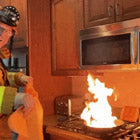 Fire
Fire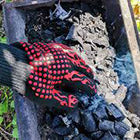 Safety
Safety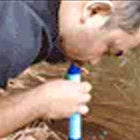 Survival
Survival Protection
Protection New
New Scouting America
Scouting America
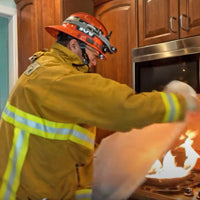 Fire
Fire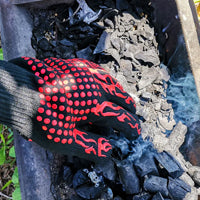 Safety
Safety Survival
Survival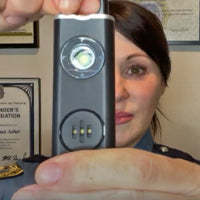 Protection
Protection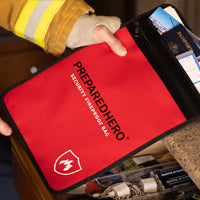 New
New
